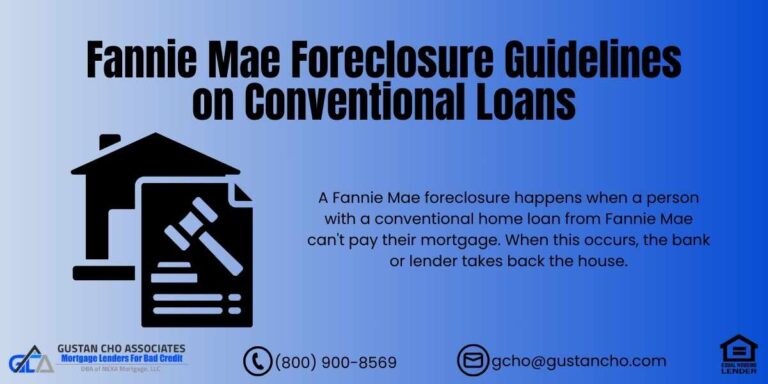Lender Credit Toward Borrowers Mortgage Closing Costs
This article will cover what lender credit is and how it works. Lender credit is when a mortgage lender gives the borrower credit towards closing costs in lieu of a higher rate. You cannot use lender credit for the down payment or reserves. Mortgage lenders can give borrowers a higher mortgage rate than normal. In return for charging a higher rate, the lender can offer a lender credit for closing costs.
Borrowers can only use lender credit for closing costs and pre-paid. Homebuyers can use seller concessions to cover closing costs. However, if the borrower is short of covering all closing costs with seller concessions, the lender can give a lender credit in lieu of a higher rate.
Homebuyers have two costs on home purchases: Homebuyers must put a down payment on a home purchase except for VA and USDA loans. All mortgage transactions, whether purchase or refinance, have closing costs. In the following sections of this guide, we will discuss lender credit toward borrowers’ closing costs.

Down Payment Requirements On Home Purchase
Down Payment is a fixed amount. FHA mortgage loans require a minimum of a 3.5% down payment, and conventional loans normally require a minimum of a 5% down payment. The down payment on a home purchase cannot be covered with seller concessions or lender credit. The down payment needs to come from the borrower’s own funds or gifted by a family member.
The down payment requirements on a home purchase depends on each individual mortgage loan program. Down payment on home purchase requirements vary from zero percent down on USDA and VA loans to 20% down payment on non-QM loans.
Owner-occupant conventional loans require 3% for first-time home buyers and 5% for seasoned home buyers. Second home financing requires a 10% down payment. Investment Home Loans require a 20% down payment. VA and USDA loans do not require a down payment. Jumbo Mortgages Require a 10% to 20% down payment. NON-QM and Bank Statement Mortgage Loans require a 20% down payment. Hard Money Loans require a 20% or more down payment.
Closing Costs On Mortgage Transactions
There are always closing costs, whether it is a purchase or refinance mortgage transaction. Besides the down payment are closing costs. Homebuyers are responsible for closing costs which can be as much or more than the down payment. However, there are ways to offset paying closing costs. This is done by getting a seller concession or a lender credit for closing costs.
Seller Concessions Towards Closing Costs
Property sellers can contribute towards buyers closing costs by offering home buyers a seller concession or contribution towards closing costs. The way seller concessions work is whatever the bottom price the seller wants to net, the purchase price will be inflated by the amount of seller concession.
Sellers can contribute 6% of the purchase price towards buyers closing costs on FHA loans. VA allows up to 4% seller concessions. USDA permits up to 6% seller concessions. Owner-occupant and second-home conventional loans allow up to 3% seller concessions. Conventional Investment Home Loans allow up to 2% seller concessions.
Non-QM Loans are portfolio loans. Seller concessions on non-QM loans is up to the individual wholesale mortgage lender. Some non-QM lenders allow up to 9% seller concessions. Seller concessions on jumbo mortgages is up to the individual lender. However, most jumbo mortgage lenders will allow up to 3% seller concessions. Any excess proceeds cannot go to the buyer in cash or credit and must return to the home seller. To avoid seller concession overages going back to the seller, overages can be used to purchase discount points to buy down mortgage rates.
Not Coming Up With Closing Costs On Home Purchase
If the home buyer cannot get a seller concession or contribution towards the buyer’s closing costs and the buyer does not have funds besides the down payment. The home buyer can get a lender credit towards closing costs. Borrowers need to realize that lender credit is not for free. Borrowers will be charged a higher rate if they choose to get a lender credit.
The mortgage lender can offer lender credit in lieu of a higher rate. Lender credit can only be used for closing costs. Lender credit cannot be used for the down payment or reserves. If the borrower is short for covering closing costs, they can get a combination of a lender credit or gift funds to cover the shortage of the closing costs.
For a higher mortgage rate, the mortgage lender will cover a set amount of funds and credit the mortgage loan borrower to cover the borrower’s closing costs. Closing costs include title charges, transfer stamps, attorneys fees, inspection fees, appraisal fees, prepaid closing costs, and other third-party charges incurred in closing the mortgage loan.
How Does Lender Credit Work
For example, if a borrower is quoted a mortgage rate of 3.75% for an FHA loan, the borrower can get a credit from the mortgage lender of $5,000 (sample figure) towards closing costs of $5,000. The best way to avoid getting a higher rate with credit from the lender is to get sufficient seller concessions.
The way the lender will credit the borrower the $5,000 credit is the lender will charge the borrower a higher mortgage rate of 4.25%. Mortgage companies offer closing cost credit to borrowers all the time.
The credit towards the borrower’s costs is not free. Lenders will get compensated by charging a higher rate. Lender credit towards closing costs is very common for new home buyers who do not want to pay more than they have to but can afford the extra monthly payment.







